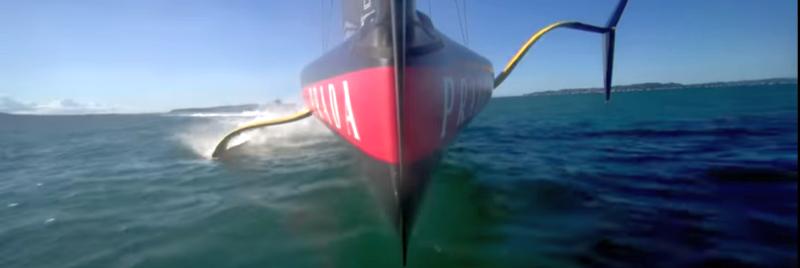 After a tie in the first two America’s Cup races, the defender Team New Zealand and the challenger Luna Rossa finished races 3 and 4 of the best of 13 race series tied again with one win each. Brief highlights of races 3 and 4 after the page break.
After a tie in the first two America’s Cup races, the defender Team New Zealand and the challenger Luna Rossa finished races 3 and 4 of the best of 13 race series tied again with one win each. Brief highlights of races 3 and 4 after the page break.
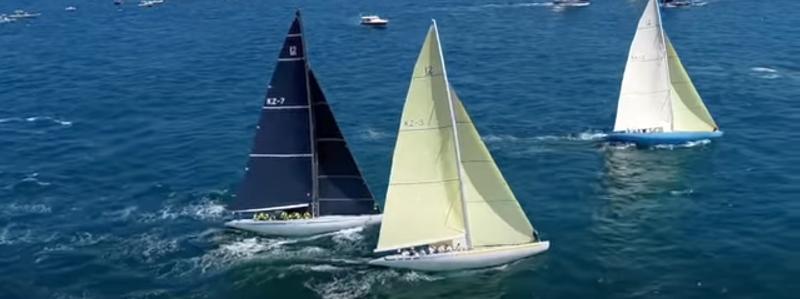 The America’s Cup races in Aukland restart again tomorrow. The defender and challenger will be sailing AC75 class boats — keel-less, flying, foiling wonders of carbon fiber, packed with hydraulics, cutting-edge electronics, and powered by soft wing sails, capable of speeds of over 50 knots.
The America’s Cup races in Aukland restart again tomorrow. The defender and challenger will be sailing AC75 class boats — keel-less, flying, foiling wonders of carbon fiber, packed with hydraulics, cutting-edge electronics, and powered by soft wing sails, capable of speeds of over 50 knots.
Here is a short documentary of America’s Cup racers of another era — the beautiful 12 metre class boats. Filmed during the 2019 12mR World Championship in Newport R.I., highlights include racing footage and competitor interviews paired with the experienced insights of the 12MYC’s Station Steward Gary Jobson who also wrote and narrated this documentary.
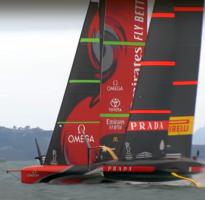 On the first day of the final races in Aukland, NZ, of the 36th sailing of the America’s Cup, the defender Emirates Team New Zealand and the challenger Luna Rossa Prada Pirelli, each won one race, ending the day in a tie. Team New Zealand won the first race by a margin of 31 seconds, while Luna Rossa won the second narrowly with a lead of only seven seconds. The best of 13 race series starts again on Friday. Short video highlights of both races are beyond the page break.
On the first day of the final races in Aukland, NZ, of the 36th sailing of the America’s Cup, the defender Emirates Team New Zealand and the challenger Luna Rossa Prada Pirelli, each won one race, ending the day in a tie. Team New Zealand won the first race by a margin of 31 seconds, while Luna Rossa won the second narrowly with a lead of only seven seconds. The best of 13 race series starts again on Friday. Short video highlights of both races are beyond the page break.
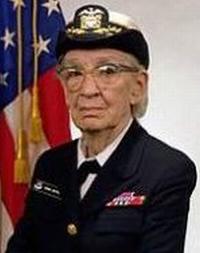 One day after the observance of International Women’s Day, there is still time to remember and honor Admiral Grace Hopper. Grace Hopper was a pioneering computer scientist and a United States Navy Rear Admiral. Hopper received a master’s degree and a Ph.D. in mathematics from Yale. She was nicknamed “Amazing Grace” and is often referred to as the “mother of computing.”
One day after the observance of International Women’s Day, there is still time to remember and honor Admiral Grace Hopper. Grace Hopper was a pioneering computer scientist and a United States Navy Rear Admiral. Hopper received a master’s degree and a Ph.D. in mathematics from Yale. She was nicknamed “Amazing Grace” and is often referred to as the “mother of computing.”
In October of 2020, the U.S. Naval Academy officially opened Hopper Hall, the academy’s new center for cybersecurity studies, named in her honor. The cybersecurity facility is the first building named after a woman at the three main service academies.
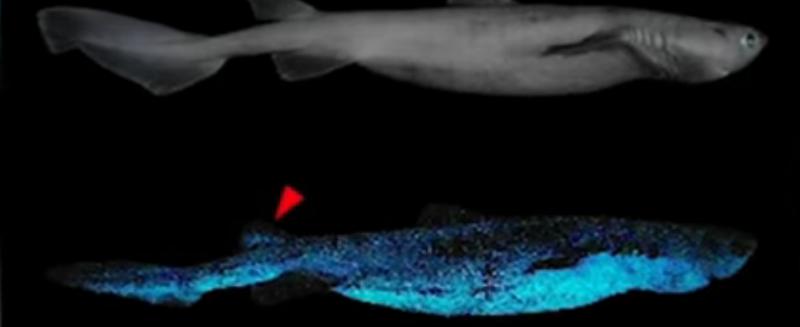 Researchers have photographed a large bioluminescent shark in deep water off New Zealand. The kitefin shark was a known species of ocean predator but was only recently discovered to be able to glow in the darkness of its deep-ocean environment. The kitefin shark, which can grow to 180cm, is now the largest-known luminous vertebrate in the world, on land or sea.
Researchers have photographed a large bioluminescent shark in deep water off New Zealand. The kitefin shark was a known species of ocean predator but was only recently discovered to be able to glow in the darkness of its deep-ocean environment. The kitefin shark, which can grow to 180cm, is now the largest-known luminous vertebrate in the world, on land or sea.
The researchers also identified two smaller species of shark — the blackbelly lanternshark, and the southern lanternshark that are also bioluminescent.
 David Morris was taking a walk along the coast near Falmouth, Cornwall, in the UK, when he saw what looked to be a large tanker hovering in the air above the horizon. He documented what he witnessed with several photographs. Apparently, Mr. Morris saw a “superior mirage” also known as a Fata Morgana.
David Morris was taking a walk along the coast near Falmouth, Cornwall, in the UK, when he saw what looked to be a large tanker hovering in the air above the horizon. He documented what he witnessed with several photographs. Apparently, Mr. Morris saw a “superior mirage” also known as a Fata Morgana.
The BBC quotes meteorologist David Braine said the “superior mirage” occurred because of “special atmospheric conditions that bend light”.
 The 9th sailing of the Vendee Globe Race is over. After 116 days at sea, Ari Huusela sailing Stark has crossed the finish line at Les Sables d’Olonne. While he was the last sailor to complete the race at 25th place, in terms of bragging rights, he is also the first Finnish sailor to finish the race.
The 9th sailing of the Vendee Globe Race is over. After 116 days at sea, Ari Huusela sailing Stark has crossed the finish line at Les Sables d’Olonne. While he was the last sailor to complete the race at 25th place, in terms of bragging rights, he is also the first Finnish sailor to finish the race.
In a larger sense, anyone who succeeds in completing the single-handed non-stop round-the-world race is indeed a winner. As Lydia Mullan writes in Sail Magazine, “In a race this difficult, making it to the finish is a victory in its own right. Though the last skipper to cross the line, Huusela will finish in 25th place of 33 and ahead of giants like Alex Thomson, Sam Davies, and Fabrice Amedeo who were unable to complete the course.”
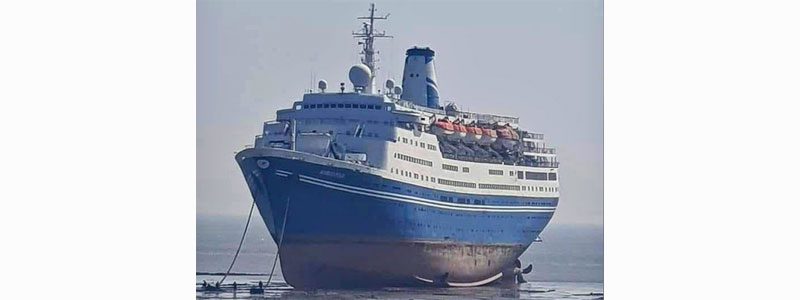
Marco Polo on the beach at Alang
Every year, on average, close to 1,000 ships are sold for scrap, or in more current language, to be recycled. Over the past year during the pandemic, there has been a particular surge in the number of older cruise being sent to shipbreaking yards. Many of these cruise ships have been sent to Turkish shipbreakers.
The BBC reported recently of two UK cruise ships sent instead to Alang, India for scrapping. The problem is that ships sent to scrap yards are considered to be hazardous waste and it is illegal to send them to developing countries from the UK. UK and EU regulations require that ships being recycled be sent to approved shipbreaking facilities that meet environmental and worker safety rules. As of this November, the approved list contains 43 yards, including 34 yards in Europe, 8 yards in Turkey, and 1 yard in the USA.
There are currently no approved ship recycling yards on the EU list in Asia, where over 90% of the world’s ships are scrapped. Continue reading
A short and lovely video from two years ago about sailing from Milwaukee on the three-masted, wooden schooner Denis Sullivan. Like so many other vessels, the schooner’s 2020 sailing season was canceled due to the pandemic and sadly, her future is uncertain.
Tighe – Primetime Edition of Sunday Morning – Denis Sullivan from Jessica Tighe on Vimeo.
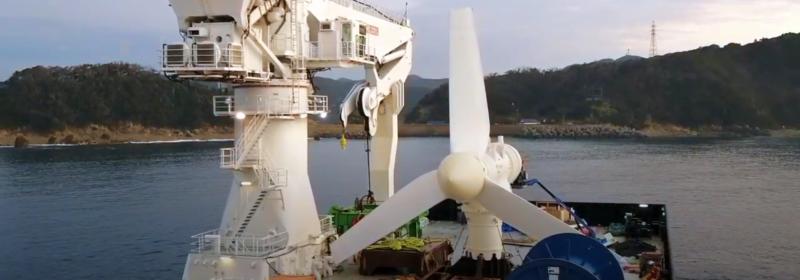 A tidal turbine, built and tested in Scotland, has been installed in waters off Naru Island, part of Japan’s Goto Island chain. Simec Atlantis Energy said its pilot turbine had generated 10 megawatt-hours in its first 10 days of operation.
A tidal turbine, built and tested in Scotland, has been installed in waters off Naru Island, part of Japan’s Goto Island chain. Simec Atlantis Energy said its pilot turbine had generated 10 megawatt-hours in its first 10 days of operation.
The AR500 turbine was put together at a facility in Scotland before being shipped to Japan. According to SAE, the overall project involves the leasing of tidal generation equipment as well as the provision of offshore construction services to Japanese company Kyuden Mirai Energy.
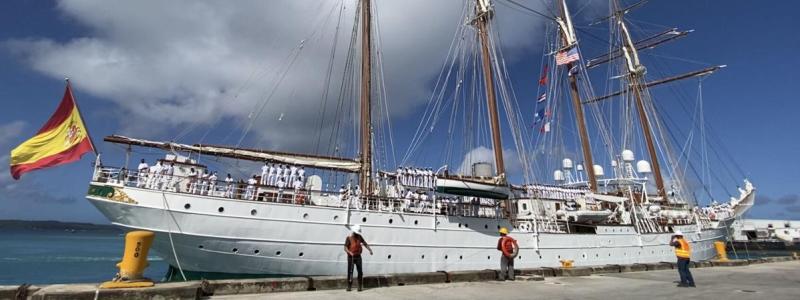 Last Friday, the Spanish Navy training ship Juan Sebastian De Elcano arrived in Guam on its journey to retrace the first circumnavigation of the globe 500 years ago. As reported by Stars and Stripes, the four-masted ship — named for the explorer who finished the voyage after the death of Ferdinand Magellan — was greeted at Naval Base Guam on Friday by Gov. Lou Leon Guerrero, Lt. Gov. Joshua Tenorio, and Rear Adm. John Menoni, commander of Joint Region Marianas, Indo-Pacific Command.
Last Friday, the Spanish Navy training ship Juan Sebastian De Elcano arrived in Guam on its journey to retrace the first circumnavigation of the globe 500 years ago. As reported by Stars and Stripes, the four-masted ship — named for the explorer who finished the voyage after the death of Ferdinand Magellan — was greeted at Naval Base Guam on Friday by Gov. Lou Leon Guerrero, Lt. Gov. Joshua Tenorio, and Rear Adm. John Menoni, commander of Joint Region Marianas, Indo-Pacific Command.
The ship, built in 1927, is said to be the third-largest tall ship in the world. It was greeted by a flotilla of canoes from seafaring organizations upon its arrival off Oka Point in Tamuning, on its way toward Apra Harbor, on Friday, the Pacific Daily News reported that day.
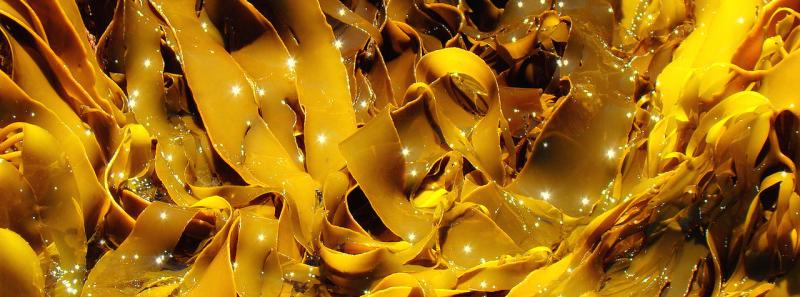
Image: Bjørn Christian Tørrissen
A start-up company in Maine is testing the feasibility of combatting climate change by growing kelp to capture carbon dioxide. Once the kelp is mature, it will sink to the bottom becoming part of the sediment and trapping the carbon for millions of years. The company, Running Tide Technologies is prototyping the concept this winter.
One often hears the recommendation to plant more trees to help reduce climate change. Saltwater plants like mangroves and seagrasses are estimated to take up 20 times more CO2 per acre from the atmosphere than land-based forests. Kelp could potentially capture far more.
 Hugh Mulzak served as the first Black Liberty ship captain in World War II. When offered the command, he refused to sail with a segregated crew.
Hugh Mulzak served as the first Black Liberty ship captain in World War II. When offered the command, he refused to sail with a segregated crew.
Born in 1886 on Union Island in Saint Vincent Grenadines, he went to sea at 21 and served on British, Norwegian, and American sail and steam-powered ships. After studying at the Swansea Nautical College in South Wales, he earned a mate’s license in 1910. He served as a deck officer on four ships during World War I.
In 1918, he became a naturalized US citizen and in 1920 sat for his Master’s license, earning a perfect score on the test. Despite his experience and qualifications, he was generally only able to find work aboard American ships as a messman or cook. Mulzak has been described as “the most over-qualified ship’s cook in maritime history.”
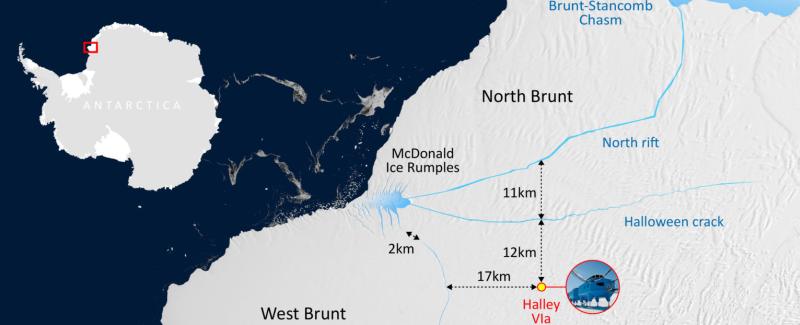 A large iceberg about 490 square miles and about 492 feet thick broke off the Brunt Ice Shelf in the Weddell Sea section of Antarctica yesterday. For comparison purposes, the City of New York is 303 square miles, while Manhattan Island is 23 square miles, so the new iceberg is a bit less than twice the size of New York City but more than 20 times the size of Manhattan.
A large iceberg about 490 square miles and about 492 feet thick broke off the Brunt Ice Shelf in the Weddell Sea section of Antarctica yesterday. For comparison purposes, the City of New York is 303 square miles, while Manhattan Island is 23 square miles, so the new iceberg is a bit less than twice the size of New York City but more than 20 times the size of Manhattan.
While the new berg is indeed big, it is dwarfed by an iceberg that broke off the Larsen Ice Shelf in 2017, which at its largest was measured at some 2,240 square miles. Until it broke up last month, the massive berg was threatening wildlife on South Georgia Island.
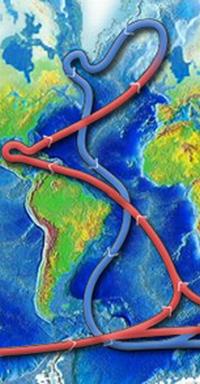 A new study has determined that the vast Atlantic Ocean current circulation system, including the Gulf Stream, is at its weakest in a thousand years. The slowing of the current, the Atlantic meridional overturning circulation (AMOC), could increase sea levels on the American East coast and may result in extreme weather in Western Europe.
A new study has determined that the vast Atlantic Ocean current circulation system, including the Gulf Stream, is at its weakest in a thousand years. The slowing of the current, the Atlantic meridional overturning circulation (AMOC), could increase sea levels on the American East coast and may result in extreme weather in Western Europe.
The AMOC is driven by two vital components of ocean water: temperature and salt. In the North Atlantic, warm, salty water flows northward off the U.S. coastline on the Gulf Stream and North Atlantic Current, carrying heat from the tropics. But as it reaches the middle latitudes, it cools, and around Greenland, the cooling and the saltiness create enough density that the water begins to sink deep beneath the surface.
The water then swings back southward and travels all the way to the Southern Hemisphere, submerged, where it makes its way to the Antarctic as part of a global system of ocean currents. The entire system is known as the ocean’s thermohaline circulation (“thermo” meaning heat and “haline,” salt), and it plays many critical roles in the climate. It is also referred to as the global ocean conveyor belt, because it redistributes heat worldwide.
 From maps to apps to chartplotters, we all rely on GPS these days, sometimes whether we realize it or not. Ethan Siegel recently wrote in Forbes: Unbeknownst to most people, however, the science underlying this technology was primarily developed by two people: Albert Einstein, whose theories of special and general relativity both play an important role, and Gladys West, a still-living and largely unheralded Black woman whose scientific contributions enabled us to understand geodesy and the shape of the Earth well enough to make GPS technology possible.
From maps to apps to chartplotters, we all rely on GPS these days, sometimes whether we realize it or not. Ethan Siegel recently wrote in Forbes: Unbeknownst to most people, however, the science underlying this technology was primarily developed by two people: Albert Einstein, whose theories of special and general relativity both play an important role, and Gladys West, a still-living and largely unheralded Black woman whose scientific contributions enabled us to understand geodesy and the shape of the Earth well enough to make GPS technology possible.
Now, we all know who Albert Einstien was. Gladys West, perhaps not so much. In honor of Black History Month, here is an updated repost about the Black female mathematician whose work for the Navy made a major contribution to the development of the Global Positioning System.
 The New York Times reports that a large oil spill from an unknown source has devastated sea life in the Mediterranean and spewed tons of tar across more than 100 miles of coastline from Israel to southern Lebanon in what Israeli officials are calling one of the worst ecological disasters in decades.
The New York Times reports that a large oil spill from an unknown source has devastated sea life in the Mediterranean and spewed tons of tar across more than 100 miles of coastline from Israel to southern Lebanon in what Israeli officials are calling one of the worst ecological disasters in decades.
Shaul Goldstein, the director of Israel’s nature and parks authority, said the spill would set back three decades of efforts to protect and renew biodiversity along the coastline.
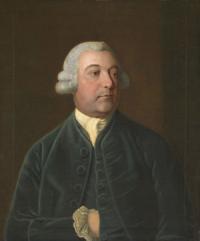 Thomas Slade, a pioneering naval architect and shipwright, died in 1771, 250 years ago today. While he is most famous for the design and construction of Admiral Horatio Nelson’s Victory, his larger contribution to the Royal Navy and even in Nelson’s victory at Trafalgar itself, can not be overstated.
Thomas Slade, a pioneering naval architect and shipwright, died in 1771, 250 years ago today. While he is most famous for the design and construction of Admiral Horatio Nelson’s Victory, his larger contribution to the Royal Navy and even in Nelson’s victory at Trafalgar itself, can not be overstated.
N.A.M. Rodger wrote of Slade: The ships which [he] designed…were admirably suited to Britain’s strategic requirements…By common consent, Slade was the greatest British naval architect of the century…it was generally agreed (even by themselves) that his successors, though competent designers, never matched his genius.
 This weekend, the Italian team Luna Rossa Prada Pirelli decisively won the Prada Cup Final, eliminating INEOS Team UK by 7 races to 1. Luna Rossa is now preparing for the final America’s Cup races against Emirates Team New Zealand beginning on March 6th. The final races for the Cup between Luna Rossa and Team New Zealand will be a rematch 21 years in the making.
This weekend, the Italian team Luna Rossa Prada Pirelli decisively won the Prada Cup Final, eliminating INEOS Team UK by 7 races to 1. Luna Rossa is now preparing for the final America’s Cup races against Emirates Team New Zealand beginning on March 6th. The final races for the Cup between Luna Rossa and Team New Zealand will be a rematch 21 years in the making.
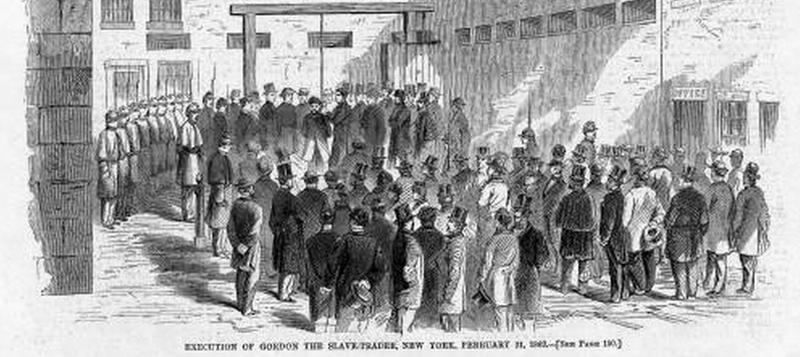 On February 21, 1862, Nathaniel Gordon, captain of the slave ship, Erie, was executed by hanging in New York City. Under the Piracy Law of 1820, slave trading was considered to be an act of piracy punishable by death. He was the only slave-trader ever to be tried, convicted, and executed in American history. Captain Gordon, originally from Portland, Maine was 36. In a detestable trade, Captain Gordan was among the worst. When he was apprehended by the USS Mohican 50 miles off the Congo in 1860, the Erie, a ship of 500 tons, had 897 Africans crammed aboard. Of these, 563 were children. Captain Gordan preferred children because they were smaller and were less able to attempt to take over the ship.
On February 21, 1862, Nathaniel Gordon, captain of the slave ship, Erie, was executed by hanging in New York City. Under the Piracy Law of 1820, slave trading was considered to be an act of piracy punishable by death. He was the only slave-trader ever to be tried, convicted, and executed in American history. Captain Gordon, originally from Portland, Maine was 36. In a detestable trade, Captain Gordan was among the worst. When he was apprehended by the USS Mohican 50 miles off the Congo in 1860, the Erie, a ship of 500 tons, had 897 Africans crammed aboard. Of these, 563 were children. Captain Gordan preferred children because they were smaller and were less able to attempt to take over the ship.
